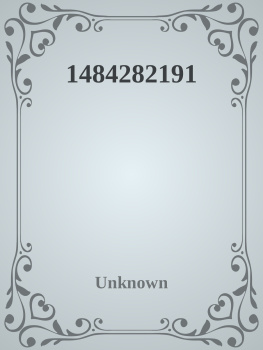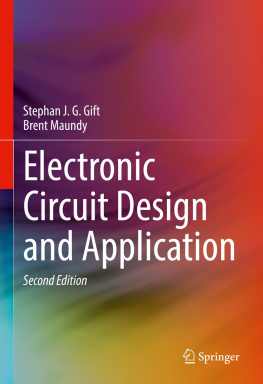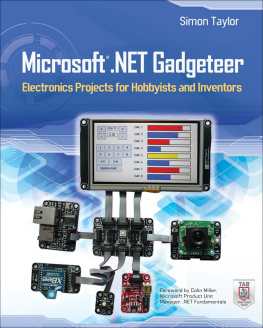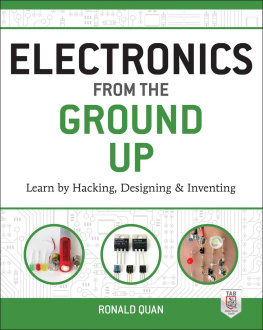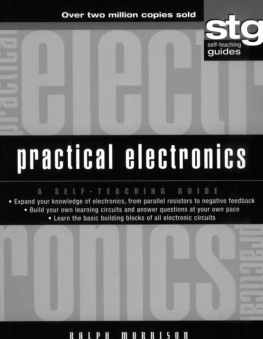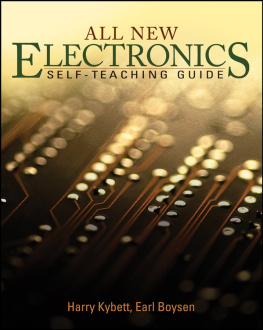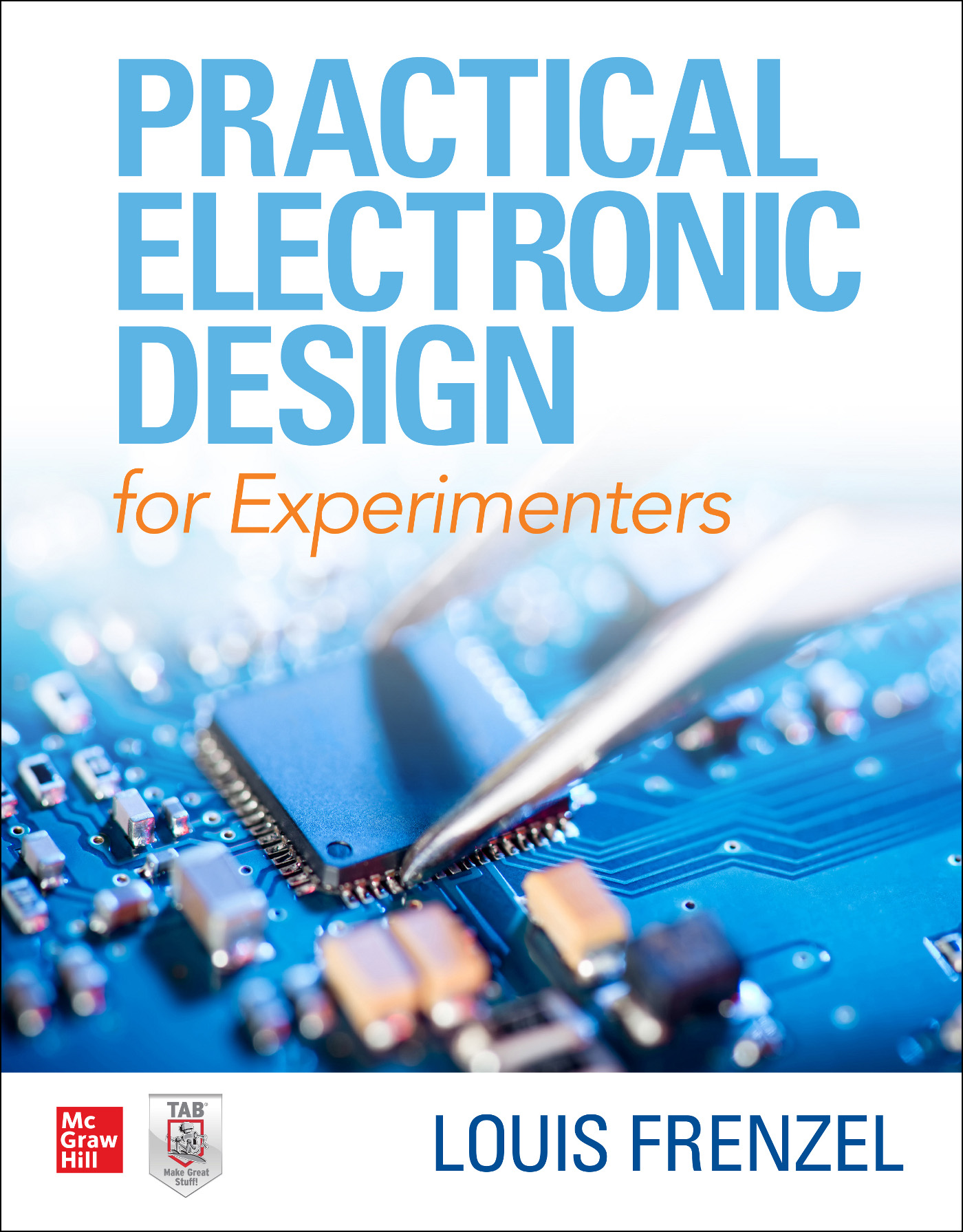
Copyright 2020 by McGraw-Hill Education. All rights reserved. Except as permitted under the United States Copyright Act of 1976, no part of this publication may be reproduced or distributed in any form or by any means, or stored in a database or retrieval system, without the prior written permission of the publisher.
ISBN: 978-1-26-045616-5
MHID: 1-26-045616-1
The material in this eBook also appears in the print version of this title: ISBN: 978-1-26-045615-8, MHID: 1-26-045615-3.
eBook conversion by codeMantra
Version 1.0
All trademarks are trademarks of their respective owners. Rather than put a trademark symbol after every occurrence of a trademarked name, we use names in an editorial fashion only, and to the benefit of the trademark owner, with no intention of infringement of the trademark. Where such designations appear in this book, they have been printed with initial caps.
McGraw-Hill Education eBooks are available at special quantity discounts to use as premiums and sales promotions or for use in corporate training programs. To contact a representative, please visit the Contact Us page at www.mhprofessional.com.
Information contained in this work has been obtained by McGraw-Hill Education from sources believed to be reliable. However, neither McGraw-Hill Education nor its authors guarantee the accuracy or completeness of any information published herein, and neither McGraw-Hill Education nor its authors shall be responsible for any errors, omissions, or damages arising out of use of this information. This work is published with the understanding that McGraw-Hill Education and its authors are supplying information but are not attempting to render engineering or other professional services. If such services are required, the assistance of an appropriate professional should be sought.
TERMS OF USE
This is a copyrighted work and McGraw-Hill Education and its licensors reserve all rights in and to the work. Use of this work is subject to these terms. Except as permitted under the Copyright Act of 1976 and the right to store and retrieve one copy of the work, you may not decompile, disassemble, reverse engineer, reproduce, modify, create derivative works based upon, transmit, distribute, disseminate, sell, publish or sublicense the work or any part of it without McGraw-Hill Educations prior consent. You may use the work for your own noncommercial and personal use; any other use of the work is strictly prohibited. Your right to use the work may be terminated if you fail to comply with these terms.
THE WORK IS PROVIDED AS IS. McGRAW-HILL EDUCATION AND ITS LICENSORS MAKE NO GUARANTEES OR WARRANTIES AS TO THE ACCURACY, ADEQUACY OR COMPLETENESS OF OR RESULTS TO BE OBTAINED FROM USING THE WORK, INCLUDING ANY INFORMATION THAT CAN BE ACCESSED THROUGH THE WORK VIA HYPERLINK OR OTHERWISE, AND EXPRESSLY DISCLAIM ANY WARRANTY, EXPRESS OR IMPLIED, INCLUDING BUT NOT LIMITED TO IMPLIED WARRANTIES OF MERCHANTABILITY OR FITNESS FOR A PARTICULAR PURPOSE. McGraw-Hill Education and its licensors do not warrant or guarantee that the functions contained in the work will meet your requirements or that its operation will be uninterrupted or error free. Neither McGraw-Hill Education nor its licensors shall be liable to you or anyone else for any inaccuracy, error or omission, regardless of cause, in the work or for any damages resulting therefrom. McGraw-Hill Education has no responsibility for the content of any information accessed through the work. Under no circumstances shall McGraw-Hill Education and/or its licensors be liable for any indirect, incidental, special, punitive, consequential or similar damages that result from the use of or inability to use the work, even if any of them has been advised of the possibility of such damages. This limitation of liability shall apply to any claim or cause whatsoever whether such claim or cause arises in contract, tort or otherwise.
Contents
Introduction
This book is for you experimenters and makers who want to design your own electronic circuits and equipment. There are not too many books like this. Most books tell you how electronic devices work and provide some projects to learn from. But now you have in your hands a book that is actually going to show you how to design your own electronic circuits and equipment. It is written in a way so that any of you who have a background in electronic fundamentals can create a circuit or device to do something you want to do. You dont have to be an engineer to design things.
With the knowledge and procedures in this book, you can create products for resale, implement scientific projects that need special equipment, or produce circuits for your own DIY (do-it-yourself) idea. The book relies upon the availability of popular integrated circuits and the many finished modules and subassemblies. Using existing products and legacy circuits eliminates most of the difficult circuit design. In many cases, you can piece together existing circuits and modules to make a device with minimal electronic design. However, some basic circuit design is usually necessary and hopefully, this book will help with that.
The design approach in this book focuses on making a working device using standard parts and circuits. The recommendations in each chapter suggest that you use chips and circuits that have been used before. Why reinvent the wheel? The result is lesser design time and greater success at lower cost. Your design may not always be leading-edge but it will do the job.
You Are the Target Audience
When writing this book, I had the following people in mind:
Hobbyists, experimenters, DIYers, and makers who want to create their own equipment.
New engineersgraduates who are well versed in math, physics, and electronic fundamentals but have not yet learned to apply that knowledge to creating products.
Technicians who are knowledgeable in electronics but have not designed.
Scientists like physicists, chemists, geologists, and other users of electronic equipment who often need custom noncommercial equipment but can learn to design their own.
Students who can supplement their theoretical studies with practical design knowledge. Students in an introductory college design course or taking a design capstone course or culminating design project course where the theory is applied to a specific circuit or device.
It is likely that you are part of one those groups.
Book Rationale
Where does one generally go to learn electronic design? At colleges or universities offering a BSEE degree, of course. These institutions teach all the science, math, theory, components, and circuits. Some courses actually teach related design. Much of the design taught in college is how to design integrated circuits using special software created for that purpose. Yet, many colleges and universities rarely address modern practical product design. There is a need to learn how to translate theory into practice by creating useful end products. This book addresses that void. It is unique and serves a need. Not everyone can go to college, but that does not mean you cannot learn design. In fact, in the real world BSEE graduates go out to jobs and that is where they really learn the design process. On the job training (OJT) is where you get actual design experience. Now you can get a taste of that with this book.


